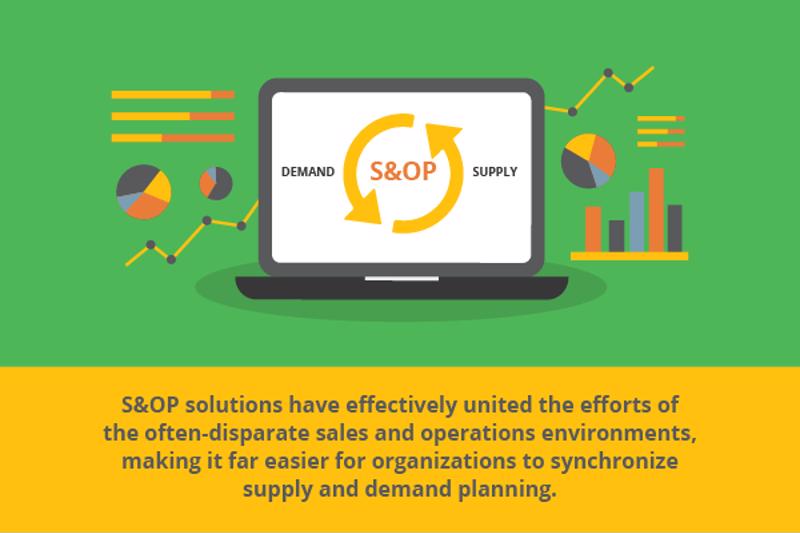Where would manufacturers be without sales & operations planning (S&OP)? Chances are, supply chains would be much more chaotic and unreliable. Businesses would have difficulty keeping up with sales demand because production, manufacturing and operations would lack any insight into sales projections and upcoming orders. Meanwhile, sales departments wouldn’t be able to trust that their closed sales would be processed and completed in a timely and profitable manner.
S&OP solutions have effectively united the efforts of the often-disparate sales and operations environments, making it far easier for organizations to synchronize supply and demand to fill every order while running as efficiently as possible.
How did S&OP become such an integral part of the modern business environment? Let’s take a look back at the evolution of sales & operations planning, as well as where these solutions are headed in the future.

1980s: Breaking down organizational silos
Before S&OP, business units historically operated in isolation from one another, handling their own processes and workflows without much visibility into other departments. That led to a number of problems with enterprise operations, as each part of the organization — sales, production, finance, etc. — had its own version of the truth. Those “truths” didn’t always match up with one another. Sales and production numbers would not match up, throwing financial figures into disarray, and leaving key decision-makers and business leaders to wonder which data accurately reflected what was happening within the organization.
The concept of S&OP first arose in the 1980s as an attempt to address these concerns and give businesses a single, reliable view of sales and production information. With these early S&OP solutions, it became easier for companies to allow demand to drive supply. Less guesswork was required to keep up with orders, which lowered unnecessary costs from production inefficiencies.
1990s: Regional planning emerges
International markets changed dramatically in the ’90s, perhaps none more so than those in Europe. The 1992 Maastricht Treaty pushed the region’s nations closer to integration and unification, paving the way for the formation of the European Union.
Consequently, the EU completely altered supply chain operations in the region, as several distinct markets suddenly became one large operational area. This change drove companies to embrace regional planning where supply chains were managed within each broader geographic area rather than specific nations.
2000s and beyond: Expansion increases complexity
The past two decades have seen a great deal of enterprise expansion — often through mergers and acquisitions — creating larger operational footprints than ever for many organizations. Extending supply chains across the globe into different international markets adds extra complexity to processes that were already pretty complicated to begin with. As a result, businesses increasingly looked for S&OP solutions that would streamline workflows, improve coordination between disparate teams and help organizations accurately forecast manufacturing and production demands.
The latest crop of S&OP software emerged in response to these needs, giving enterprises more sophisticated features and the ability to look ahead at expected sales and order processing requirements and adjust production accordingly.
Big data analytics tools allow companies to gather and process more information, giving them clearer insights into their enterprise operations and identify emerging trends before they fully materialize. The ability (or lack thereof) to assess the impacts of such trends, including social media, could be a game changer for any organization to meet the demands of their customers in a cost effective manner.
Cloud-based platforms have made it easier for growing organizations to scale their S&OP processes to keep up with demand — all at a fraction of the cost of traditional, on-premises software. Disparate sales, manufacturing, order processing and financial teams can all share useful information with each other using these applications. Data silos have functionally become a thing of the past — at least for those organizations that choose to embrace modern S&OP solutions.
Inspirage has decades of experience crafting solutions using the most sophisticated and advanced S&OP solutions available. We can directly address the most pressing pain points and challenges enterprises experience with forecasting. Our work continues to evolve alongside industry demands, utilizing cutting-edge S&OP platforms that deliver tangible value to our customers.
